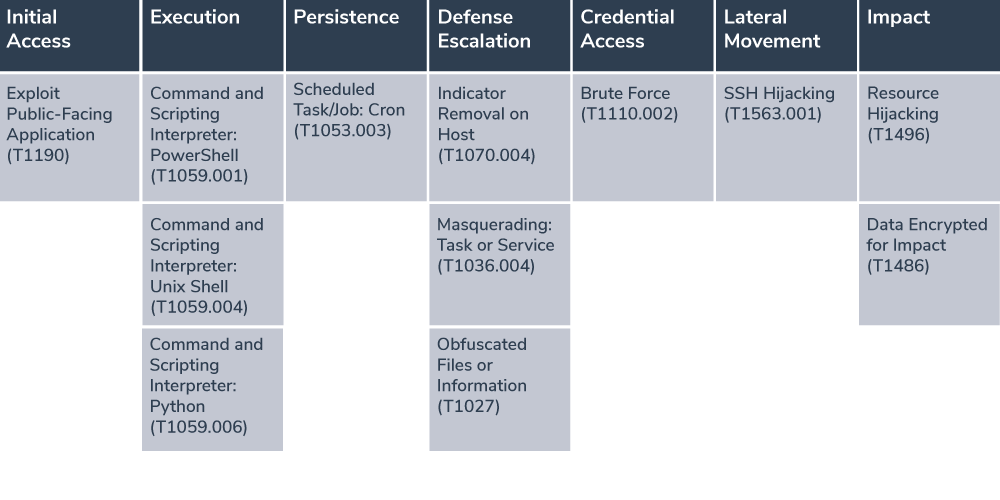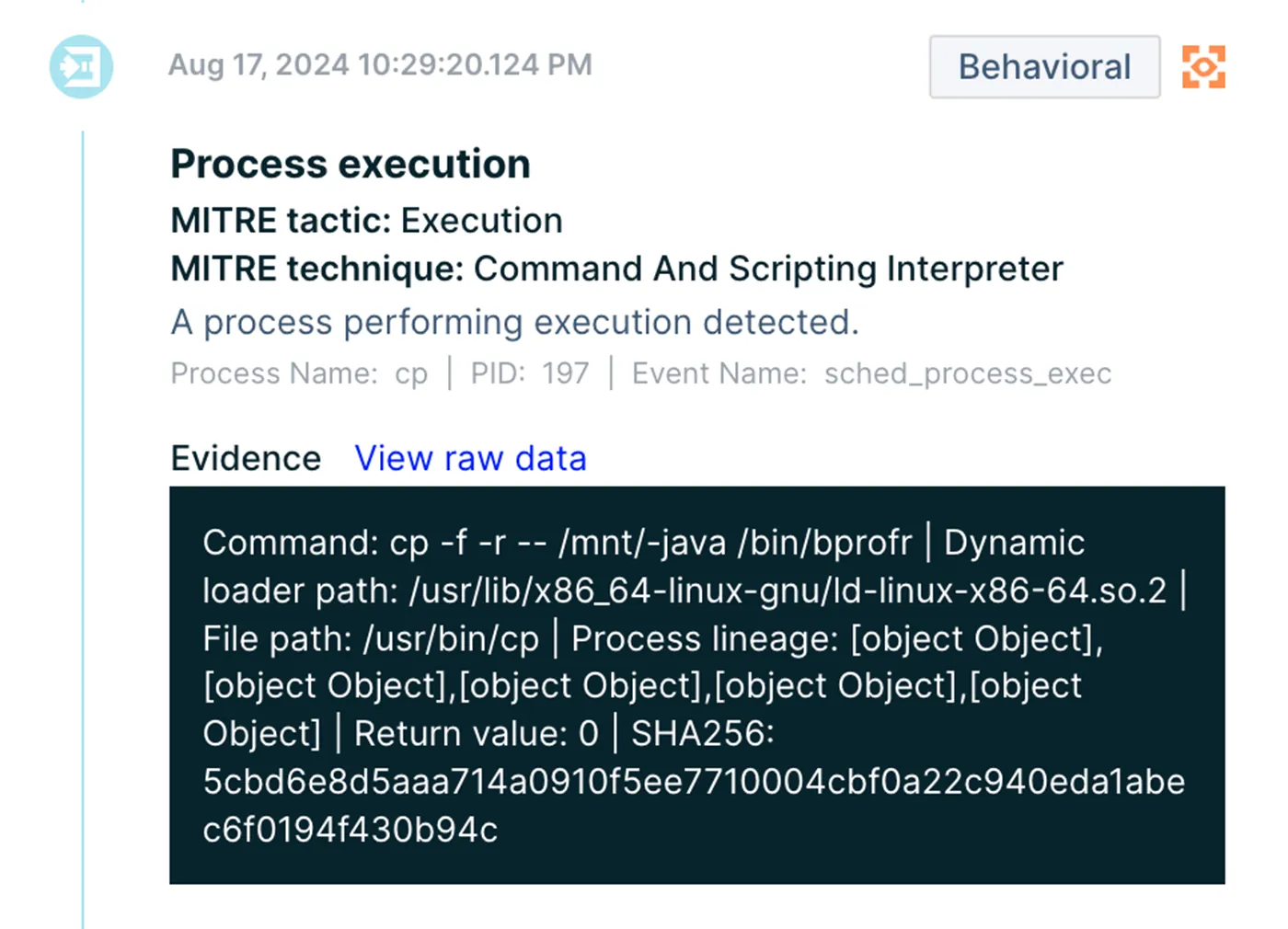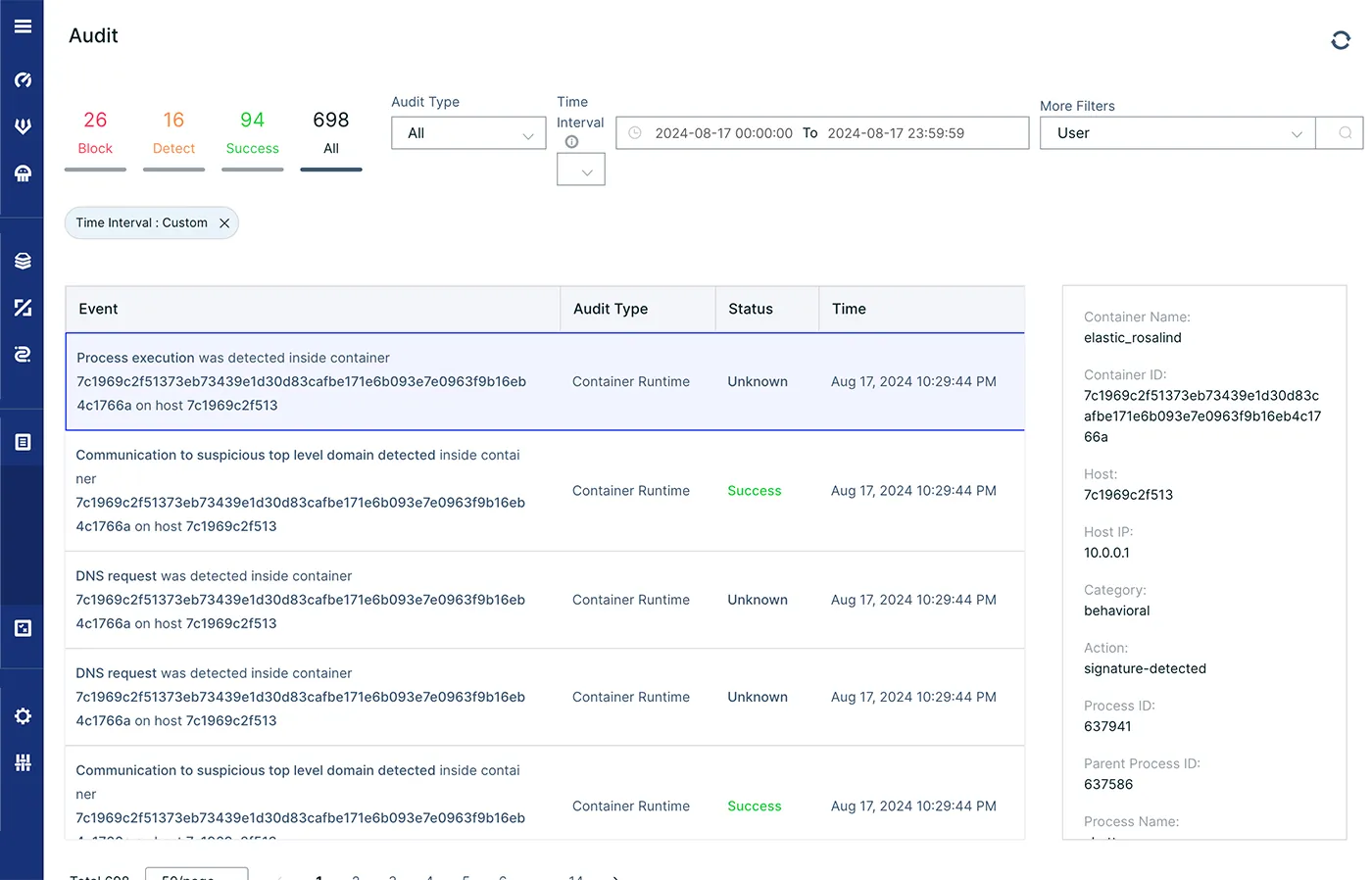Aqua Nautilus researchers identified a new Linux malware targeting Weblogic servers. The main payload calls itself Hadooken which we think is referring to the attack “surge fist” in the Street Fighter series. When Hadooken is executed, it drops a Tsunami malware and deploys a cryptominer. In this blog, we explain the malware, its components, and how we detected it.
About Oracle Weblogic server
WebLogic Server is an enterprise-level Java EE application server developed by Oracle, used for building, deploying, and managing large-scale, distributed applications. It’s commonly used in banking, e-commerce, and business-critical systems due to its support for Java technologies, transaction management, and scalability. However, WebLogic is a frequent target for cyberattacks due to vulnerabilities such as deserialization flaws and improper access controls. Misconfigurations, like weak credentials or exposed admin consoles, can lead to remote code execution (RCE), privilege escalation, and data breaches if not properly patched or secured.
The Attack Flow
Our Weblogic honeypots expose both vulnerabilities and a weak password. In this case the threat actor exploited the weak password to gain initial access and gain remote code execution.
Below you can see the entire attack flow:
In figure 2 below you can see the malicious remote code executed after the initial access. The primary payload is downloaded; By downloading two scripts which do almost the same thing, a shell script called ‘c’ and a Python script called ‘y’.
In figure 3 below, you can see decoded base64 part from the initial payload. So, it looks like the threat actors are trying to use Python should the ‘c’ shell script won’t run on the server they just attacked.
As illustrated below, the Python script (‘y’), is attempting to download a malware called Hadooken (MD5: cdf3fce392df6fbb3448c5d26c8d053e) preferably into a non-persistent temporary directory. This Python code iterates over several paths, trying to download and run the Hadooken malware and then delete the file.
The shell script is downloading the Hadooken malware only to ‘/tmp’ directory, executes it and then delete it.
In addition, the shell script version attempts to iterate over various directories containing SSH data (such as user credentials, host information, and secrets) and uses this information to attack known servers. It then moves laterally across the organization or connected environments to further spread the Hadooken malware.
Lastly, it clears logs.
The Hadooken malware itself contains both a cryptominer and Tsunami malware. When Hadooken malware is executed, it drops two elf files. The first file is a packed cryptominer (MD5: b9f096559e923787ebb1288c93ce2902) dropped into 3 paths under 3 different names: ‘/usr/bin/crondr ‘, ‘/usr/bin/bprofr’ and ‘/mnt/-java’.
After unpacking the MD5 of the cryptominer is 9bea7389b633c331e706995ed4b3999c.
The second file is a Tsunami malware (MD5: 8eef5aa6fa9859c71b55c1039f02d2e6), after a random name is generated, it is dropped to ‘/tmp/<<random>>’. We haven’t seen any indication that the attacker is using the Tsunami malware during the attack. Nevertheless, it could be used later on during the attack.
In addition, the malware is creating multiple cronjobs to maintain persistence. By creating cronjobs with random names in various frequencies (hourly, daily, weekly and monthly), by saving the execution script under different cron directories:
‘/etc/cron.<<Period>>/<<Random String>>’.
Below you can see that it is renaming the cryptominer (‘crondr’) as ‘-bash’ and executing it.
Additional Threat Intelligence
Two IP addresses are used to download Hadooken malware (89.185.85.102 and 185.174.136.204). The first one (89.185.85.102) is still active, it is registered in Germany under the hosting company ‘Aeza International LTD’. In the past this IP address was linked to TeamTNT and Gang 8220, but this weak link cannot attribute this attack to any of these threat actors. The second IP address (185.174.136.204) is inactive and registered in Russia under the hosting company ‘AEZA GROUP Ltd’.
On server 89.185.85.102 we also found a Powershell named b.ps1 (MD5: c1897ea9457343bd8e73f98a1d85a38f), which distributes the Windows Ransomware ‘Mallox’ (MD5: 4a12098c3799ce17d6d59df86ed1a5b6). There are some reports that this IP address is used to disseminate this ransomware, thus we can assume that the threat actors is targeting both Windows endpoints to execute a ransomware attack, but also Linux servers to target software often used by big organizations to launch backdoors and cryptominers.
It’s worth mentioning that during our static analysis of the Hadooken binary we found some links to ransomware RHOMBUS and NoEscape. But the dynamic analysis showed that there was no use in this code. It could be the threat actor will introduce to this attack to a Linux ransomware as well, or it is already introduced if the malware runs on the system longer than a sandbox execution.
A search in Shodan (a search engine for finding internet-connected devices and systems) suggests that there are over 230K internet connected Weblogic servers. A further analysis shows that most of them are protected, which is very good. We saw a few hundred internet-connected, Weblogic server administration consoles. These may be exposed to attacks that exploit vulnerabilities and misconfigurations.
Mapping the attack to the MITRE ATT&CK Framework
Our investigation showed that the attackers have been using some common techniques throughout the attack. Here we map each component of the attack to the corresponding techniques of the MITRE ATT&CK framework:
Initial Access
- Exploit Public-Facing Application: Exploiting vulnerable WebLogic servers by taking advantage of weak credentials to gain access.
Execution
- Command and Scripting Interpreter – Unix Shell: The use of shell script (`c`) for malicious execution.
- Command and Scripting Interpreter – Python: The use of Python script (`y`) for malicious execution.
- Command and Scripting Interpreter – PowerShell: PowerShell script `b.ps1` used to distribute malware (Mallox ransomware).
Persistence
- Create or Modify System Process – Cron: Use of cron jobs to maintain persistence by executing malicious payloads periodically.
Defense Evasion
- Masquerading – Task or Service: Use of known names such as -java, -bash.
- Obfuscated Files or Information: Use of base64-encoded payloads to avoid detection.
- Indicator Removal on Host: Deleting logs after executing malicious activities.
Credentials Access
- Brute Force: The initial access is gained via successful brute force into the Weblogic administration panel.
Lateral Movement
- Remote Service Session Hijacking - SSH Hijacking: Iterating over SSH keys to move laterally across the network.
Impact
- Resource Hijacking: Running a cryptominer as part of the Hadooken malware.
- Data Encrypted for Impact: Potential use of ransomware like RHOMBUS and NoEscape in future versions of the attack.
Detection and Mitigation
In this blog we explained about Hadooken malware and how it exploited a misconfiguration to gain initial access to our honeypot Weblogic server. There are several tools and best practices to help find and prevent misconfigurations in cloud native development. These tools typically focus on areas such as infrastructure as code (IaC), container security, Kubernetes, cloud service configurations, and runtime environments.
- Infrastructure as Code (IaC) Scanning Tools: These tools (like Aqua Trivy) analyze IaC templates like Terraform, CloudFormation, or Kubernetes YAML files for potential misconfigurations before deployment.
- Cloud Security Posture Management (CSPM) Tools: CSPM tools (such as in the Aqua-Orca integrated offering) are used to scan cloud configurations for potential misconfigurations, compliance violations, or security risks across various cloud services (e.g., AWS, Azure, GCP).
- Kubernetes Security and Configuration Tools: Kubernetes clusters are a critical part of cloud-native architectures, and tools exist to scan for potential misconfigurations in clusters, pods, and deployments. For instance:
- Trivy: Scans Kubernetes clusters for compliance with security best practices, including misconfiguration, hardening, cluster vulnerabilities and more. Also checks compliance with CIS (Center of Internet Security) Kubernetes benchmarks and NSA (National Security Agency) security guidelines.
- Kube-Bench: Checks whether Kubernetes is deployed securely by running the CIS (Center for Internet Security) Kubernetes Benchmark.
- Container Security Tools: Containers are at the heart of cloud-native development, and their configurations, including Docker files and container images, need to be checked for security flaws. Aqua Trivy is a simple and comprehensive vulnerability scanner for container images and file systems, checking for misconfigurations and vulnerabilities.
- Runtime Security Tools: These tools monitor running cloud-native applications and services to detect misconfigurations, anomalies, or suspicious behavior in real time. Aqua Tracee is an eBPF based runtime security tool that monitors Linux environments including Kubernetes and containerized environments for runtime security threats.
The Aqua Platform is a single, integrated solution that enables organizations to secure every cloud native application everywhere. The platform protects cloud native applications from known, unknown and unexpected threats, such as misconfigurations and a newly discovered malware in this case. Aqua combines proactive and reactive security capabilities with context from the code commit to runtime stages.
The Aqua Platform includes a single, universal scanner powered by Aqua Trivy to detect known vulnerabilities, concealed malware, hidden secrets, configuration errors, and open-source license issues. In runtime, Aqua can detect and alert if a suspicious or malicious action is taking place. In this instance, Aqua discovered 16 suspicious incidents illustrating various malicious milestones during the attack recorded on our honeypot. As you can see in Figure 10 below, Aqua detected indications of drift, file unpacking, and cryptominer execution.
When carefully observing the timeline preceded the cryptomining execution, we can see just like we explain above, Hadooken malware drops ‘/mnt/-java’. You can see in figure 11 below, a detection of drift. When -java is the process name and below in the raw data you can see the execution command.
Another detection on this timeline is the unpacking of -java right after the execution.
In figure 13 below we can also observe how -java copies itself and saves itself under other different paths.
In the Aqua Platform, you can observe the audit logs which is helpful for incident response teams to continue their investigation into breaches.
Indications of Compromise (IOCs)
| Type | Value | Comment |
|---|---|---|
| IP Addresses | ||
| IP Addresses | 185.174.136.204 | Attacker IP |
| IP Addresses | 89.185.85.102 | Attacker IP |
| Files | ||
| Binary file | MD5: cdf3fce392df6fbb3448c5d26c8d053e | Hadooken malware |
| Binary file | MD5: 4a12098c3799ce17d6d59df86ed1a5b6 | Mallox malware |
| Binary file | MD5: b9f096559e923787ebb1288c93ce2902 | Packed Cryptominer |
| Binary file | MD5: 9bea7389b633c331e706995ed4b3999c | Unpacked Cryptominer |
| Binary file | MD5: 8eef5aa6fa9859c71b55c1039f02d2e6 | Tsunami malware |
| Powershell | MD5: c1897ea9457343bd8e73f98a1d85a38f | b.ps1 |
| Shell script | MD5: 249871cb1c396241c9fcd0fd8f9ad2ae | C |
| Python script | MD5: 73d96a4316182cd6417bdab86d4df1fc | Y |
















